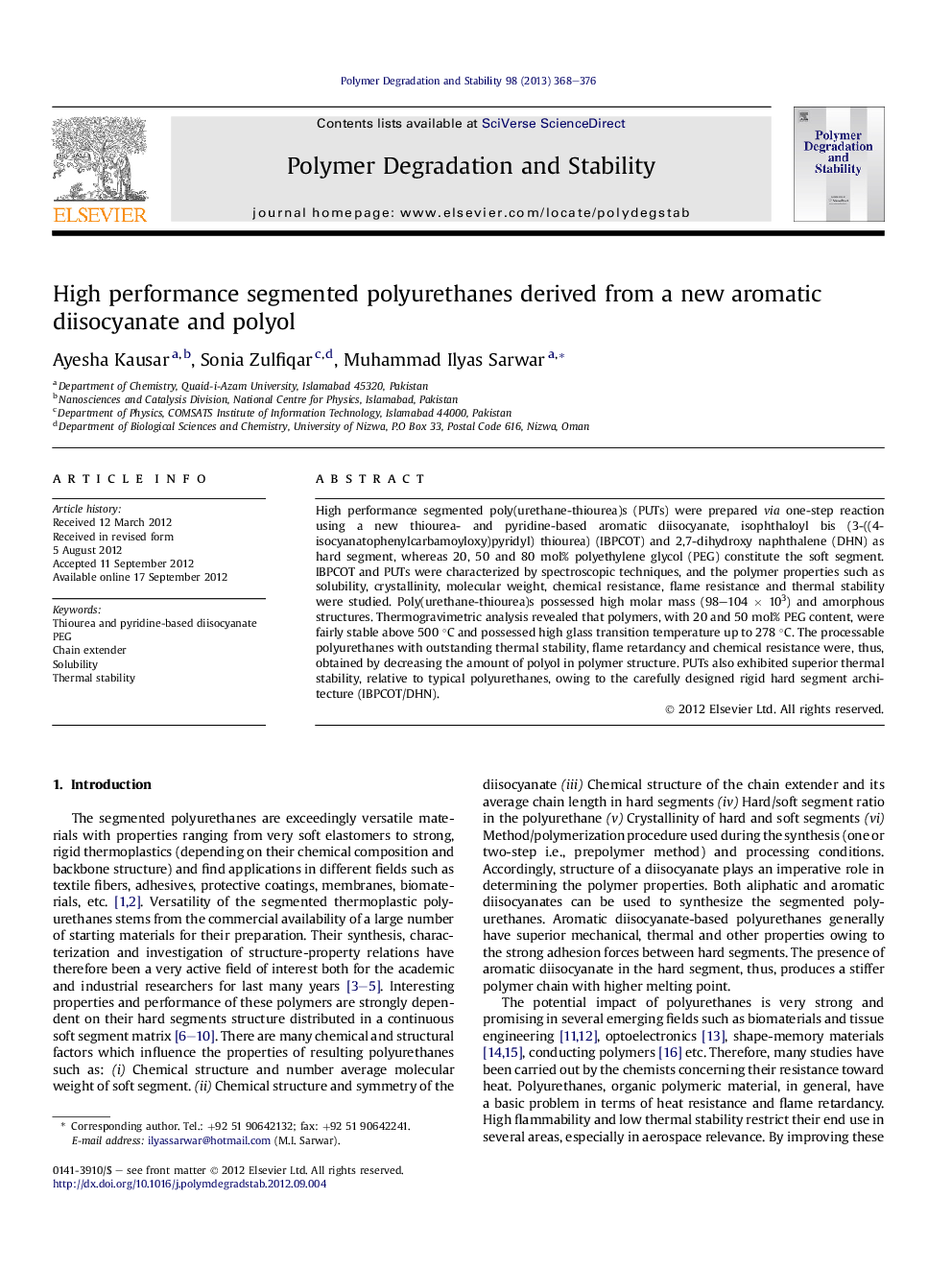| Article ID | Journal | Published Year | Pages | File Type |
|---|---|---|---|---|
| 5202470 | Polymer Degradation and Stability | 2013 | 9 Pages |
High performance segmented poly(urethane-thiourea)s (PUTs) were prepared via one-step reaction using a new thiourea- and pyridine-based aromatic diisocyanate, isophthaloyl bis (3-((4-isocyanatophenylcarbamoyloxy)pyridyl) thiourea) (IBPCOT) and 2,7-dihydroxy naphthalene (DHN) as hard segment, whereas 20, 50 and 80 mol% polyethylene glycol (PEG) constitute the soft segment. IBPCOT and PUTs were characterized by spectroscopic techniques, and the polymer properties such as solubility, crystallinity, molecular weight, chemical resistance, flame resistance and thermal stability were studied. Poly(urethane-thiourea)s possessed high molar mass (98-104 Ã 103) and amorphous structures. Thermogravimetric analysis revealed that polymers, with 20 and 50 mol% PEG content, were fairly stable above 500 °C and possessed high glass transition temperature up to 278 °C. The processable polyurethanes with outstanding thermal stability, flame retardancy and chemical resistance were, thus, obtained by decreasing the amount of polyol in polymer structure. PUTs also exhibited superior thermal stability, relative to typical polyurethanes, owing to the carefully designed rigid hard segment architecture (IBPCOT/DHN).
